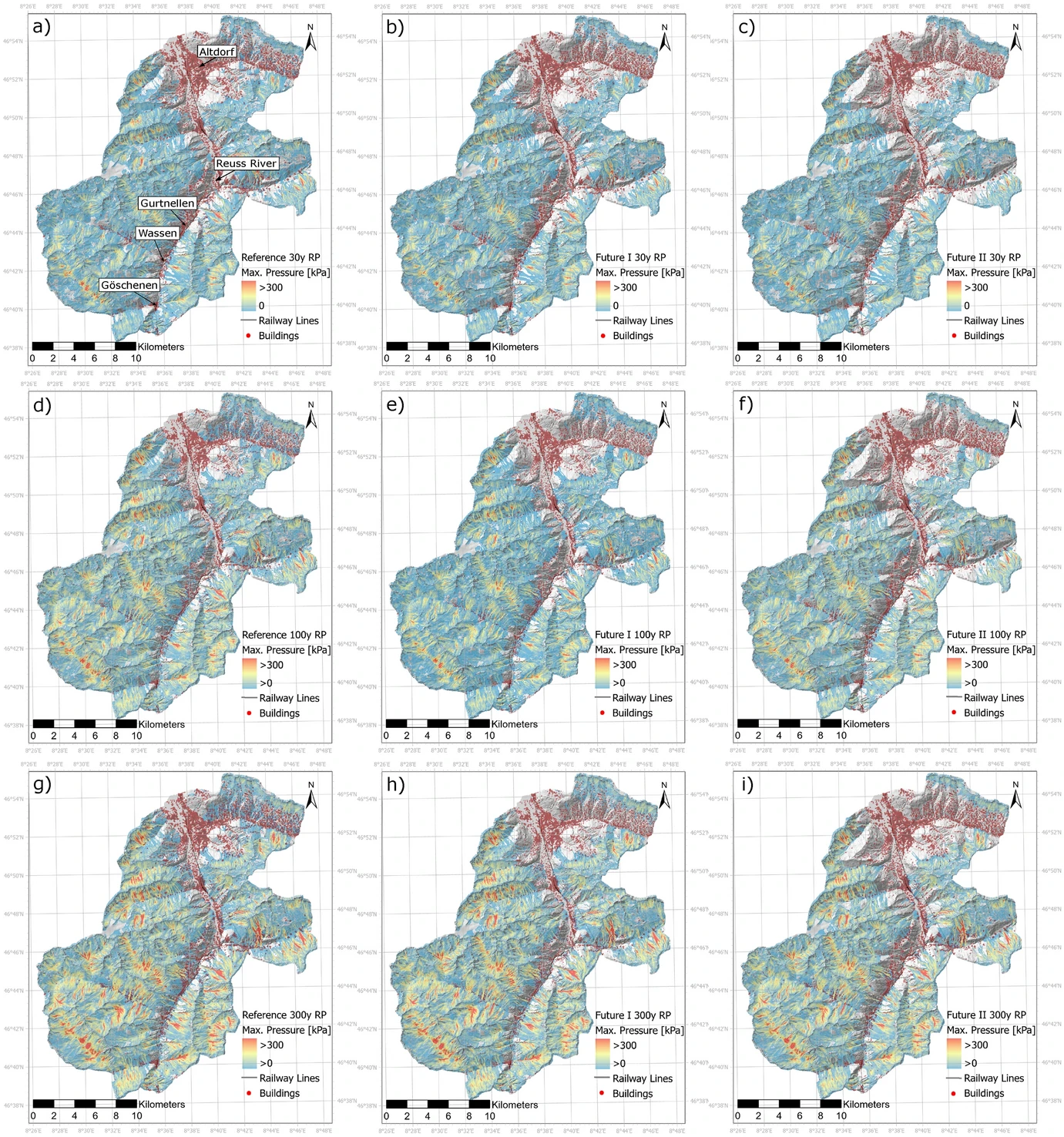
A groundbreaking new study by Swiss researchers offers the most detailed look yet at how climate change could reshape avalanche risk across the Alps but also globally. Published in Natural Hazards, the paper, authored by scientists from the WSL Institute for Snow and Avalanche Research SLF and ETH Zurich, uses high-resolution models to examine avalanche danger in painstaking local detail—down to the impact on individual buildings.
The study zeroes in on Uri, a mountainous canton in central Switzerland known for its steep slopes and heavy snowfall. The researchers created a digital simulation of avalanche hazards under current and future climate scenarios. They modeled avalanche pressure, snowpack temperature, and accumulation across three timeframes: present-day (1997–2022), mid-century (2048–2073), and late-century (2073–2098).
To get there, they ran climate projections from the CH2018 Swiss climate scenarios through SNOWPACK and RAMMS, two of the most advanced snow and avalanche modeling tools available. Those models fed into CLIMADA, a risk analysis platform capable of linking avalanche hazards to real-world structures and assigning damage estimates in Swiss francs. The result? A series of spatial risk maps that visualize not just where avalanches may hit harder or less often—but also what that could cost in actual damages.
The biggest takeaway might come as a surprise: overall avalanche risk is projected to decline by the end of the century. In the most likely scenario, the average annual damage from avalanches drops from CHF 2.73 million today to CHF 0.69 million by 2100. That’s largely due to a rising snowline and shorter avalanche runouts as warming temperatures reduce snow accumulation at lower elevations.

But the full picture is much more complex—and less comforting. In worst-case scenarios with extreme snowfall events at higher altitudes, risk could actually spike mid-century. One model showed annual damages rising to CHF 4.29 million before falling later in the century. This variability points to a critical reality: local geography and elevation matter a lot, and some places won’t see relief at all. Buildings in high-risk areas, particularly valley floors below avalanche-prone slopes, may still face consistent or even worsening threats. These locations often collect enough snow from upper elevations to fuel destructive avalanches regardless of climate change’s overall warming effect. In other words, even if general avalanche activity declines, local hazards could remain—and mitigation planning needs to reflect that nuance.
The study also highlights how climate change impacts might not be linear or uniform. For example, while warmer conditions generally reduce snowpack stability, they also change avalanche types and dynamics. A wetter snowpack could lead to slower-moving avalanches but with higher pressure in run-out zones, potentially causing more damage to infrastructure. The study’s open-source modeling framework allows policymakers and planners to simulate future risk under multiple climate scenarios. It supports more informed decisions about where to build, how to protect structures, and when to invest in mitigation.
Lead author Gregor Ortner and the research team suggest this approach could—and should—be expanded beyond the Gotthard region. “The framework we developed is designed to be scaled,” they write, pointing to future possibilities for modeling landslides, debris flows, and rockfalls in other Alpine regions. Their goal is to bring these simulations to the public via online interactive maps, fostering transparency and resilience planning at the local level.
Yet, there are limitations. The models rely on assumptions about snowfall thresholds, protection forest stability, and socio-economic factors that could evolve in unpredictable ways. And while the CH2018 scenarios provide robust data, more extreme events might still be underrepresented. The researchers plan to revisit their simulations when Switzerland releases its next set of climate projections. This study, which takes abstract climate data and translates it into something immediate and tangible, shows what might happen to the homes, roads, and towns tucked into avalanche paths as the century unfolds, providing a roadmap for understanding what’s at stake.
You can read the full study in Natural Hazards via SpringerLink here.